HOLY APOSTOLIC CATHOLIC PALMARIAN CHURCH TIMELINE
1946 (April 23): Clemente Domínguez Gómez was born in Seville.
1968 (March 30): Four girls reported to have seen the Virgin Mary at the Alcaparrosa. field, just outside Palmar de Troya, a town in Spanish Andalusia.
1968 (April onwards): Several other people, most of them women, claimed to receive apparitions at the site. The stories attracted large groups of people from the region, other parts of Spain, and from abroad.
1968 (October 15). Clemente Domínguez Gómez and his friend Manuel Alonso Corral from Seville visited the apparition site for the first time.
1969 (September 30). Clemente had his first vision (of Christ and Padre Pio).
1969 (December 15). Clemente had his first vision of the Virgin Mary.
1970 (May 18): The archbishop of Seville, Cardinal José María Bueno Monreal issued a formal denunciation of the apparitions.
1972 (18 March). The archbishop of Seville reiterated his denunciation of the apparitions and forbade all kinds of Catholic cult at the Alcaparrosa field.
1972 (May 9): Clemente proclaimed that Paul VI would be succeeded by both a true pope and an antipope.
1972: Clemente and his closest followers began to refer to themselves as Marian apostles or Apostles of the Cross.
1974: Clemente and Manuel acquired the Alcaparrosa field. A more elaborate shrine and a surrounding wall was constructed.
1975 (December 22): A Palmarian religious order, the Carmelites of the Holy Face, was founded.
1976 (January 1): Archbishop Pierre-Martin Ngô-Dinh-Thuc Thuc ordained four priests at Palmar de Troya, including Clemente and Manuel.
1976 (January 11): Thuc consecrated five bishops at Palmar de Troya, including Clemente and Manuel.
1976 (January 14): Archbishop Bueno declared the consecrations irregular and the newly consecrated bishops suspended.
1976 (January 15): All involved in the consecrations were excommunicated by the papal nuncio to Spain.
1976-1978: The Palmarian bishops consecrated more than ninety bishops.
1976 (May 29): Palmarian bishops were involved in a car accident in the Basque country. Clemente was seriously wounded, and he lost his sight.
1976 (August 4): Clemente received a message that he would become pope after the death of Paul VI.
1978 (August 6): Pope Paul VI died.
1978 (August 6): While in Bogotá, Colombia, Clemente claimed to have been crowned pope by Christ and that he had taken the name Gregory XVII.
1978 (August 9): Clemente was back in Spain and the Holy See was formally moved from Rome to Palmar de Troya. The Holy Apostolic Catholic Palmarian Church was founded.
1978 (August 15): Gregory XVII was crowned pope by four newly appointed cardinals.
1980 (March 30): The Palmarian Council was inaugurated. After its opening session, the Palmarian Credo was published.
1983 (October 9): The much briefer Latin-Tridentine-Palmarian Mass order replaced the traditional Tridentine rite.
1987 (November 2): The Spanish Supreme Court gave the Palmarian church official status as a religious organization.
1992 (October 12): The Palmarian council was concluded. The Treatise on the Mass was its main result.
1997-2001: The First Palmarian synod was held. Sacred History or Holy Palmarian Bible was its main result.
2000 (November 5): Gregory XVII excommunicated eighteen bishops and seven nuns. Some of them found an independent Palmarian group in Archidona, Andalusia.
2005 (March 21): Pope Gregory XVII died.
2005 (March 24): Father Isidoro María (Manuel Alonso) was crowned pope and took Peter II as his papal name.
2011 (July 15): Peter II died.
2011 (July 17): Father Sergio María, Ginés Jesús Hernández Martínez, was crowned as the third Palmarian pope. He took Gregory XVIII as his papal name.
2012 (January 6): The second Palmarian council was inaugurated.
2016 (April 22): Gregory XVIII left the papacy and the Palmarian Church.
2016 (April 23): The Secretary of State, Bishop Eliseo María‒Markus Josef Odermatt‒became the new Palmarian pope‒Peter III.
2016 (April 27): The ex-pope, now using his civil name Ginés Jesús Hernández, gave his first interview with the Spanish media and declared that he left the Palmarian church after realizing that it was a hoax and that he now lived together with a woman, Nieves Triviño.
2016 (May 2): In his first apostolic letter, Pope Peter III informed the Palmarian faithful that the ex-pope was an “apostate” and a ”cursed beast” and accused him of stealing money and valuable items from the church before leaving.
2016 (June 29): Peter III declared the decisions of the Third Palmarian Council devoid of any value, due to the ex-pope’s influence over it.
2016 (July 16): Peter III was crowned pope in the basilica in Palmar de Troya.
2016 (September 11): Ginés Hernández and Nieves Triviño were married.
2018 (June 10): Hernández and Triviño climbed over the walls of the church compound at Palmar de Troya, masked and armed. A bishop discovered them. In a subsequent fight, Hernández was severely injured, while the bishop and Triviño received less serious physical injuries.
2018 (June 13): Hernández and Triviño were arrested for “armed robbery with aggravating circumstances.” After initial court proceedings, both were sent to prison awaiting trial.
GROUP/FOUNDER HISTORY
Palmar de Troya, located about forty kilometers south of Seville was settled in the 1930s. By the late 1960s, the town had about 2,000 inhabitants. It had electricity but still lacked a medical doctor and running water. It was ecclesiastically marginal as well, having neither resident priest nor permanent church building. When the curate from a neighboring town did arrive, religious services were held in a private home or at an industrial compound. Few townspeople went to mass regularly, and Palmar de Troya was considered something of a mission field.
On March 30, 1968, four school girls (Ana, Josefa, Rafaela and Ana) between the ages of eleven and thirteen reported seeing a “very beautiful lady” when picking flowers by a mastic tree (lentisco) on the Alcaparrosa field, less than a kilometer from the town center. [See the comprehensive history of the Palmarian Churchand the book manuscript A Pope of Their Own] The woman was identified as the Virgin Mary. From April 1968 onwards, other people asserted to have mystical experiences close to the mastic tree. Several women and men fell into trances, claiming that the Virgin Mary appeared and spoke to them. Most of the ecstatic were not natives of Palmar de Troya, but rather came from other locations in the nearby area. The heavenly messages received at Palmar de Troya at this early stage were often very brief and general. The Virgin told the seers that all people should frequently pray Our Father and the rosary and convert to traditional Catholic faith. These were the only ways to placate divine ire and save humanity. The stories about the apparitions rapidly spread to other parts of the country, and even abroad. Growing crowds of people visited the place. On certain days, particularly on the fifteenth of each month when the Virgin usually made important statements, they numbered in the thousands.
By the end of 1969, Clemente Domínguez y Gómez (1946-2005) had become one of the most influential seers at Palmar de Troya. 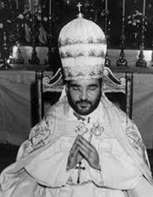 Later, many would look upon him as the seer par excellence, while others would consider him a fake or something in between. After failing to enter priest seminary, he became an office clerk. He worked for a Catholic company in Seville for a time but subsequently was fired. Clemente was not one of the pioneer seers, but beginning in the summer of 1969, and on an almost daily basis, he went to Palmar de Troya together with his friend, the lawyer Manuel Alonso Corral (1934-2011).
Later, many would look upon him as the seer par excellence, while others would consider him a fake or something in between. After failing to enter priest seminary, he became an office clerk. He worked for a Catholic company in Seville for a time but subsequently was fired. Clemente was not one of the pioneer seers, but beginning in the summer of 1969, and on an almost daily basis, he went to Palmar de Troya together with his friend, the lawyer Manuel Alonso Corral (1934-2011).
According to official Palmarian hagiography, Clemente had an ecstatic experience at the Alcaparrosa field on August 15, 1969, and one and a half months later, on September 30, he received his first vision, of Christ and the recently deceased Italian Capuchin Padre Pio. On December 8, he began receiving visions of Virgin Mary. Even if Clemente was the recipient of the heavenly communications, it was his friend Manuel Alonso, who recorded them on tape, transcribed them, and distributed them to pilgrims. It is clear that Clemente was the charismatic figure and the recipient of the heavenly messages, while Manuel was the organizer.
In various apparitions, the Virgin and Christ let him know that there was only one true mass, the Tridentine Latin rite. The novus ordo mass promulgated in 1969 was nothing less than blasphemy. The Tridentine Latin rite must therefore be reinstated. Other salient themes were that freemasons and communists had infiltrated the Roman Catholic Church at all levels. Nevertheless, according to Clemente, Pope Paul VI was free of guilt as he was drugged and held hostage.
During the early 1970s, Clemente Dominguez continued to receive new heavenly messages. They were recorded by Manuel 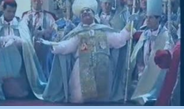 Alonso, written down, copied and distributed. Some of them were translated into English, French and German as part of the diffusion of the news beyond Spain’s borders. To be able to make mission journeys and institutionalize the movement, funding was needed. According to testimonies, Manuel Alonso was a very good fund-raiser who convinced some very wealthy people to contribute large sums. The capital influx meant that Clemente and Manuel could travel widely on both sides of the Atlantic. Beginning in 1971, they went through Western Europe, to the United States and to various countries in Latin America to win people for the Palmarian cause.
Alonso, written down, copied and distributed. Some of them were translated into English, French and German as part of the diffusion of the news beyond Spain’s borders. To be able to make mission journeys and institutionalize the movement, funding was needed. According to testimonies, Manuel Alonso was a very good fund-raiser who convinced some very wealthy people to contribute large sums. The capital influx meant that Clemente and Manuel could travel widely on both sides of the Atlantic. Beginning in 1971, they went through Western Europe, to the United States and to various countries in Latin America to win people for the Palmarian cause.
Palmar de Troya belonged to the archdiocese of Seville and it soon became clear that the Palmarians could not count on any support from the archbishop, Cardinal José María Bueno Monreal, who wholeheartedly embraced the reforms of Vatican II and systematically implemented them. Thus, he was certainly no ideal partner for a group of traditionalists, who saw the Council as the main root of evil. For two years, however, Archbishop Bueno made no official statements about the events, but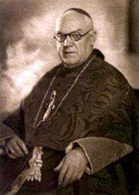 a steady stream of pilgrims kept coming to Palmar de Troya. It was reported that as many as 40,000 people were present on May 15, 1970. Three days after this all-time-high, Bueno published a document, where he briefly commented on the events. He did not mince matters when stating that they were signs of “collective and superstitious hysteria.” The gist of the archbishop Bueno’s statement on Palmar de Troya was reiterated in 1972. In a decree, he explicitly forbade all kinds of public worship at the Alcaparrosa field, ordering Roman Catholic priests not to be present, let alone celebrate any religious services there.
a steady stream of pilgrims kept coming to Palmar de Troya. It was reported that as many as 40,000 people were present on May 15, 1970. Three days after this all-time-high, Bueno published a document, where he briefly commented on the events. He did not mince matters when stating that they were signs of “collective and superstitious hysteria.” The gist of the archbishop Bueno’s statement on Palmar de Troya was reiterated in 1972. In a decree, he explicitly forbade all kinds of public worship at the Alcaparrosa field, ordering Roman Catholic priests not to be present, let alone celebrate any religious services there.
There is, however, clear evidence that individual Catholic priests were present at Palmar de Troya, both before and after the archbishop’s denunciations, and that Tridentine masses were celebrated regularly at the site from 1969 onwards. The clerical support group included both Spaniards and foreigners, who were critical of the post-conciliar developments. Still, the seers and leaders of the growing movement were laypeople in the early 1970s. Being successful in their fund raising endeavors, in 1974, Clemente and Manuel could acquire the apparition site and thus control the movement. After the purchase, they built a somewhat more elaborate shrine, initially a hangar-like construction.
In a vision to Clemente on November 30, 1975, the Virgin Mary and Christ announced the forthcoming foundation of a new religious order that would replace all the existing ones. The new Palmarian order, the Carmelites of the Holy Face, was indeed founded on December 22, 1975. It included four classes of members: priests, brothers, sisters and tertiaries. The Palmarians still lacked priests of their own, of course, and Archbishop Bueno of Seville would not ordain any for them. Nonetheless, it was imperative for the group to be able to claim apostolic succession.
The solution to the ordination problem came with Vietnamese Archbishop Pierre-Martin Ngô-dinh-Thuc (1897-1984). After one of the Vatican II sessions, he had been unable to return to his home country and therefore lived in Italy. Thuc was consecrated 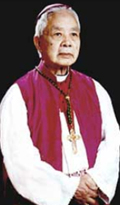 bishop in 1938 and became archbishop of Hue in 1960. While living in Europe, he was replaced in Hue and instead made titular archbishop of Bulla Regia. However, he actually served as an assistant pastor in a small Italian town, upset and bewildered by the changes in the post-conciliar church. Archbishop Thuc came to Palmar de Troya through the mediation of Maurice Revaz, who taught canon law at the traditionalist Society of Pius X’s seminary in Ecône. Revaz convinced Thuc that he was elected by the Virgin to save the Catholic Church from perdition. With short notice, the Vietnamese prelate therefore travelled to Seville and Palmar de Troya. On New Year’s night in 1976, he ordained Clemente Dominguez, Manuel Alonso, and two other men to the priesthood. The priestly ordinations, however, were just the prelude. Less than two weeks later, on January 11, 1976, Thuc consecrated five of the Palmarians, once again including Clemente and Manuel. With the episcopal consecrations, the Palmarians had secured their much sought-after apostolic succession and could start making bishops of their own.
bishop in 1938 and became archbishop of Hue in 1960. While living in Europe, he was replaced in Hue and instead made titular archbishop of Bulla Regia. However, he actually served as an assistant pastor in a small Italian town, upset and bewildered by the changes in the post-conciliar church. Archbishop Thuc came to Palmar de Troya through the mediation of Maurice Revaz, who taught canon law at the traditionalist Society of Pius X’s seminary in Ecône. Revaz convinced Thuc that he was elected by the Virgin to save the Catholic Church from perdition. With short notice, the Vietnamese prelate therefore travelled to Seville and Palmar de Troya. On New Year’s night in 1976, he ordained Clemente Dominguez, Manuel Alonso, and two other men to the priesthood. The priestly ordinations, however, were just the prelude. Less than two weeks later, on January 11, 1976, Thuc consecrated five of the Palmarians, once again including Clemente and Manuel. With the episcopal consecrations, the Palmarians had secured their much sought-after apostolic succession and could start making bishops of their own.
While the local hierarchy had been slow to comment on the apparitions, their reaction to the ordinations and consecrations was immediate. Following the episcopal consecrations, Archbishop Bueno declared them irregular and all those involved to be suspended a divinis and thus barred from performing any clerical acts, while again denouncing the purported apparitions at Palmar de Troya. On January 15, the papal nuncio, Luigi Dadaglio, went to Seville where he declared the Palmarian bishops and Archbishop Thuc excommunicated from the time of the consecrations ( ipso facto ) in the absence of necessary licenses from the Holy See and the ordinary. In September 1976, the Sacred Congregation for the Doctrine of the Faith in Rome declared the clerics suspended ipso iure (according to Canon Law), but made no clear statement about whether the consecrations were invalid or substantially valid though illicit.
By 1976, the Palmarians had already developed a quickly growing ecclesiastical hierarchy, and in less than two years they consecrated ninety-one bishops. Most of them were from Ireland and Spain, while others came from a number of countries in the Americas and Europe. The normal procedure in this period was that Clemente claimed to have received a private apparition from the Virgin or Christ, asking him to consecrate more bishops. In the messages, it was also clearly pointed out who should be made bishops. An effect of this modus operandi was that males who entered as friars in the Carmelites of the Holy Face could become bishops within months, weeks, or even days. A small minority of the consecrated Palmarian bishops were or had been Roman Catholic priests, others had attended seminary, while most were young laymen. At this time, the Palmarians did not consider themselves a separate church but as among the few true adherents of the Roman Catholic Church.
By the beginning of the 1970s, Clemente Domínguez already claimed that Pope Paul VI would be succeeded by both a true pope and an antipope. In 1976, the messages became even more concrete, and it was implied that there would be a time when the Catholic Church would not be Roman anymore. As for the status of Pope Paul VI, the Palmarian stories changed over time. Some claimed that he was drugged or held a prisoner and was replaced by an actor. At the same time, it was claimed that Paul VI would soon arrive there in person to lead his faithful episcopal college, thus escaping the curia of Rome.
Pope Paul VI died on August 6, 1978. At that time, Clemente was in Bogotá together with a group of bishops. Just hours after the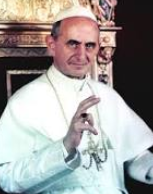 demise of Paul VI, Clemente claimed to have become pope by direct divine intervention, taking the name Gregory XVII. Having returned to Seville, on August 9, he proclaimed that the Holy See had moved from Rome to Palmar de Troya. The Roman era of the church was over and the Holy Catholic Apostolic Palmarian Church was established.
demise of Paul VI, Clemente claimed to have become pope by direct divine intervention, taking the name Gregory XVII. Having returned to Seville, on August 9, he proclaimed that the Holy See had moved from Rome to Palmar de Troya. The Roman era of the church was over and the Holy Catholic Apostolic Palmarian Church was established.
Palmarian church activities were in no way restricted to Spain. In the early 1980s, there were missionary bishops in France, Germany, Austria, Switzerland, Ireland, Great Britain, Nigeria but also in the United States, Canada and in various countries in the Caribbean and Latin America, particularly Argentina, Mexico, Costa Rica, Peru, Chile and Colombia. In Oceania, there were communities in Australia and New Zealand. Some of these places had separate chapels and resident clergy. In most locations, however, Palmarians formed so-called cenacles in private homes, and were visited by clergy on an infrequent basis. It is hard to estimate the membership in the late 1970s and early 1980s, but it must have amounted to a few thousand.
No official documents show the overall member changes in the Palmarian Church. Still, for bishops, there are internal data that give a clear indication. Overall, 192 men were consecrated Palmarian bishops between 1976 and the death of Gregory XVII in 2005. During these three decades, no less than 133 have either left the order or been expelled, twenty-seven died in office, and only thirty-two bishops remained as of 2005. The female branch of the order, which at its height included more than a hundred nuns, was probably down to thirty or forty by 2005, and the decline has continued. During the Palmarian church’s existence, many bishops, priests, nuns and lay people have left the church voluntarily or been excommunicated, while new people have entered. Still, except for at the very beginning, most new members were children of Palmarian couples and not people coming from outside.
The late 1990s and early 2000s was a very turbulent time in the church, filled with secessions and expulsions. The crisis had to do not only with the new teachings of the church, but also with the behavior of the pope and other leaders. The pope’s morals became an apple of discord. In 1997, Gregory XVII apparently made a public statement, confessing that he had had sinned against the vow of chastity during his time as the leader of the order. On the same occasion, he also confessed to immoderate drinking and eating habits. In a sermon three years later, the pope made clear reference to his earlier aberrant behavior, but claimed that he had mended his ways.
The five-volume Sacred History or the Palmarian Bible, printed in 2001, became another very serious point of discord. It was a thorough and very detailed reworking of the biblical books based on the continuous private revelations to Gregory XVII. The goal of the revision was to establish the true meaning of the texts, exactly as the divine author had conceived them. When the new Bible was made public, the faithful were ordered to destroy their traditional Bibles and only read the Palmarian version. Criticism against this development led to further secessions and excommunications.
Interestingly enough, at the time of the secessions and expulsions, by the turn of the millennium there was one feature of papal religious behavior that changed. Not since the Palmarian Council was inaugurated in 1980, when teaching had become more formalized and institutionalized, had Gregory XVII fallen into public ecstasy, receiving heavenly messages before the eyes of the faithful. Still, it happened again after 2000.
These public ecstasies were certainly a way to present evidence for that Christ and the Virgin was on Gregory’s side, thus defending his papal authority. According to the pope, the faithful members of the visible church under his absolute rule were about to enter the Ark of salvation, whose doors soon would be closed. In his view, the church militant is minuscule, but it consists of the only people that obey the divine (and papal) will.
Holy Week in 2005 was a crucial time in the history of the Palmarian Church, as Gregory XVII died on March 21. At his death, there 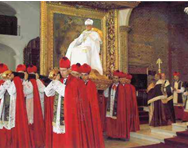 was no conclave as he had already named Father Isidoro María (Manuel Alonso) his successor. The latter was crowned on March 24, taking Peter II as his papal name. In his first apostolic letters, the new pope defended his position as the true successor of Gregory XVII the Very Great, who was immediately canonized. Peter II never claimed to receive any private apparitions and mainly looked upon himself as the defender of the Palmarian teachings.
was no conclave as he had already named Father Isidoro María (Manuel Alonso) his successor. The latter was crowned on March 24, taking Peter II as his papal name. In his first apostolic letters, the new pope defended his position as the true successor of Gregory XVII the Very Great, who was immediately canonized. Peter II never claimed to receive any private apparitions and mainly looked upon himself as the defender of the Palmarian teachings.
Under Peter II, the Palmarian church became more closed and exclusive than ever before, even if it was a matter of degree and not of kind. Messages about the necessity to break with the surrounding world and live according to strict Palmarian norms have been present in every apostolic letter. On a number of occasions, Peter II reiterated the idea that the Palmarian Church is the only hope in a world totally dominated by Satan. Not only the “apostates,” but also lukewarm members were accused of destroying the church from within. During the papacy of Peter II, the number of detailed regulations increased considerably, and many of the older ones have become even stricter. Many have to do with clothing. There are many other rules that distinguish Palmarians from what they see as the total moral depravity of the surrounding world. Church members are not allowed to vote in general elections or enter the church buildings of other denominations. They are also forbidden to attend baptisms, weddings or funerals of non-Palmarians, including close relatives. Even more far-reaching is the general ban against talking to people not dressed in the Palmarian way, or non-Palmarians at large. Members must destroy their television sets, videos, mobile telephones and computers in order not to be infected by the “repugnant moral leprosy rampant in the world,” as the pope phrased it.
It has always been difficult to know exactly how the Palmarians have been able to assemble such substantial funds despite being a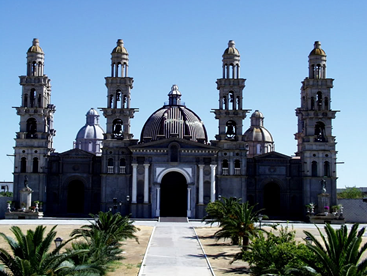 rather small organization. During the 1970s, 1980s and to some extent into the 1990s, the Palmarian church was very wealthy due to substantial, more or less voluntary, donations from members and benefactors. People paid part of their salary to the church, and it became the beneficiary in last wills and testaments. With the money, the leaders acquired about ten buildings in the city- center of Seville, which served as headquarters and convents. They also were able to build the enormous church at the apparition site, the Cathedral-Basilica of Our Crowned Virgin of El Palmar, which is one of the largest temples constructed in twentieth-century Spain. Together the sumptuous religious paraphernalia kept within the Basilica, its cost is at least 100,000,000 Euros, and probably much more. Due to decreasing incomes in the late 1990s, the Palmarians sold their remaining buildings in Seville in 2003. At that time, the clergy left for Palmar de Troya, where the order had bought some twenty houses in the 1970s. New buildings were constructed on the cathedral compound. Palmar de Troya thus became the residential center of the church, not only the spiritual.
rather small organization. During the 1970s, 1980s and to some extent into the 1990s, the Palmarian church was very wealthy due to substantial, more or less voluntary, donations from members and benefactors. People paid part of their salary to the church, and it became the beneficiary in last wills and testaments. With the money, the leaders acquired about ten buildings in the city- center of Seville, which served as headquarters and convents. They also were able to build the enormous church at the apparition site, the Cathedral-Basilica of Our Crowned Virgin of El Palmar, which is one of the largest temples constructed in twentieth-century Spain. Together the sumptuous religious paraphernalia kept within the Basilica, its cost is at least 100,000,000 Euros, and probably much more. Due to decreasing incomes in the late 1990s, the Palmarians sold their remaining buildings in Seville in 2003. At that time, the clergy left for Palmar de Troya, where the order had bought some twenty houses in the 1970s. New buildings were constructed on the cathedral compound. Palmar de Troya thus became the residential center of the church, not only the spiritual.
After six years in office, Peter II died on July 15, 2011. His successor was Bishop Sergio María, the former military officer Ginés Jesús Hernández Martínez (b. 1959). He was publically named Peter II’s successor on March 3, 2011. The new Palmarian pope was 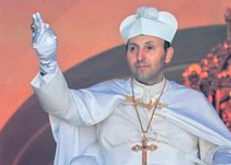 crowned on July 17, taking the name Gregory XVIII. Shortly after the coronation, the new pope convened a new Palmarian Council to begin in January 2012. During the pontificate of Gregory XVIII , the Palmarian economy seems to have improved considerably. After a decade-long long standstill, the work on the cathedral speeded up, and by 2014, the construction work that began in 1978 was finished.
crowned on July 17, taking the name Gregory XVIII. Shortly after the coronation, the new pope convened a new Palmarian Council to begin in January 2012. During the pontificate of Gregory XVIII , the Palmarian economy seems to have improved considerably. After a decade-long long standstill, the work on the cathedral speeded up, and by 2014, the construction work that began in 1978 was finished.
On April 22, 2016, Gregory XVIII suddenly left the papacy and the Palmarian church. He did not make any statement to the community or the church members at large but just left a note, stating that he had lost faith. He went to live with a woman, Nieves Triviño, a former Palmarian nun, with whom he had had an affair for some time. On April 23, 2016, Gregory’s Secretary of State, Swiss Bishop Eliseo María‒Markus Josef Odermatt‒became pope under the name Peter III. In his first pastoral letters to the Palmarian faithful, Peter III declared the ex-pope an “apostate” and a “cursed beast,” who had tried to destroy the entire church. He described Gregory’s pontificate as tyranny. Peter III also accused Hernández of stealing money, jewelry, and a luxurious BMW (the “pope-mobile”).
Between April and June 2016, Ginés Hernández gave several interviews with Spanish media, in which he declared that the Palmarian Church was an elaborate hoax, built on lies, but that he had only recently realized it. However, he gave no indications about what kind of information he had encountered. In September 2016, Hernández and Triviño married. Just before the wedding, the posed semi-nude for a Spanish men’s magazine.
On June 10, 2018, Ginés Hernández and Nieves Triviño climbed over the high wall that surrounds the church compound at Palmar de Troya. Their faces were covered, and they were armed with at least one knife. They also carried equipment that could be used to open doors and locks. It was the Mass hour, and the friars, nuns and lay people were inside the cathedral. However, they were discovered by a Palmarian bishop. Then Hernández attacked, or at least threatened, the bishop with a knife, and in the subsequent tumult, all three were injured. While the bishop and Triviño received minor damages, Hernández was stabbed in the chest. For some time his condition was critical. However, a few days later both Hernández and Triviño were arrested for “armed robbery with aggravating circumstances,” and after court hearings both were brought to prison, awaiting trial.
Today (2018), the number of Palmarian church members remains low, probably somewhere between 1,000 and 1,500. Most of them live in Spain, Ireland, and Nigeria, but there are small Palmarian communities in many other places too, including the United States, Germany, Switzerland, Austria and several countries in Latin America. By mid-2016, Pope Peter III informed the faithful that the Palmarian religious community included thirty-two friars (bishops), of whom just seven had taken their vows in the last two decades. The nuns counted forty, but only a tenth of them had joined in the last twenty years and that their average age was almost sixty years. Though no exact data are available, by 2018 the number of friars and nuns had decreased somewhat, mainly due to deaths and lack of new vocations. In short, the Palmarian Church experiences a membership crisis.
RITUALS/PRACTICES
Just as the Roman Catholic Church, the Palmarians hold that Christ instituted seven sacraments. Nevertheless, they also teach that in this end-time the election to the papacy is an eighth, invisible sacrament, directly conferred by Christ. One original aspect of that Palmarian sacramental theology is that the Virgin “enthrones” a drop of her blood into the faithful at baptism or 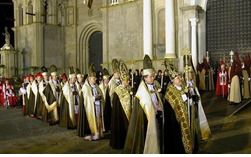 conversion. This drop can be strengthened, diminished or disappear altogether according to the moral status of the individual. The sacraments also “enthrone” and strengthen a piece of Christ’s heart in the faithful.
conversion. This drop can be strengthened, diminished or disappear altogether according to the moral status of the individual. The sacraments also “enthrone” and strengthen a piece of Christ’s heart in the faithful.
Baptism is the door to the church and the other sacraments, and children should preferably be baptized within eight days of their birth. Through baptism, the child (or adult) receives Mary’s blood drop, which takes away original sin. The Palmarian baptism has an undeletable character, but the strength of the blood drop can be weakened. The sacrament of confirmation should ideally be administered very shortly after baptism. It strengthens the blood drop and makes the individual stronger in his or her fight against Satan. If a person commits a cardinal sin, the blood drop of Mary disappears. Confession is the way to re-enter the state of grace.
The eucharist is arguably the most important sacrament for the Palmarians. In his first papal decrees in 1978, Pope Gregory XVII declared that the only rite that should be used was the Tridentine mass of Pius V, promulgated in 1570. Shortly thereafter, however, he introduced several new elements, and on October 9, 1983, the pope instituted a new, much briefer Palmarian mass order, which is concentrated to offertory, consecration and sacrificial communion taken by the priest. Briefly, every cleric should read several masses a day; in fact, they read turns of masses and not individual masses. According to Palmarian doctrine, the body, soul and blood of Christ and Mary are present in the consecrated bread and wine. Communion should only be taken on the tongue and the recipient must be kneeling when receiving the sacrament.
The fifth sacrament of the church, the last unction, strengthens the faithful’s relationship with Christ and Mary, and increases the Virgin’s blood drop. In the Palmarian church, there are three degrees of clerical ordination: deacon, priest and bishop. At ordination, the priest becomes inhabited by the soul of Christ, seen in the form of a radiant cross. The seventh Palmarian sacrament is marriage. Its main reason is to give children, new members, to the church. Still, virginity is the preferred state.
Through the years, the Palmarian church has canonized a very large number of people. Just in the period between 1978 and 1980, some 1,400 named individuals were declared saints by Gregory XVII. The saints are of many kinds. They came from many different parts of the world and died between the eleventh century and the mid-1970s. Still, the large majority were Spanish. One important category of Palmarian saints is bishops, priests and nuns killed during the Spanish Civil War. Among the saints canonized in 1978 was also the recently deceased Spanish leader Francisco Franco, but other twentieth-century right-wing politicians such as the Fascist leader José Antonio Primo de Rivera also were elevated to the altars. English martyrs, killed during the sixteenth and seventeenth-century persecutions of Catholics, constitutes another sizeable group, as do missionaries who died as martyrs in China and Indochina. Gregory XVII also canonized an “innumerable” group of Irish martyrs, killed because of their Catholic faith.
ORGANIZATION/LEADERSHIP
At its foundation in 1978, the Palmarian church, officially known as Santa Iglesia Católica Apostólica y Palmariana and Orden Religiosa de los Carmelitas de la Santa Faz en Compañía de Jesús y María, already had a developed, top-heavy organizational structure, headed by the pope. The pope has absolute power in the church. He is the High Priest, the Vicar of Christ and the Successor of St. Peter. He is infallible when proclaiming doctrine and has the supreme spiritual and temporal authority in the universe. Still, it is evident that the first Palmarian pope, Gregory XVII and Manuel Alonso (Father Isidoro María) were close collaborators. Clemente/Gregory was the “voice-box” of heaven and charismatic leader, while Manuel/Isidoro María was the eminent grise through whom all messages passed.
From 1976 onwards, the Palmarians consecrated a large number of bishops. Palmarian priests existed, but they were clearly outnumbered by bishops. At the foundation of the church in 1978, most of the bishops were made cardinals, who were members of a curia, led by Secretary of State, Father Isidoro María. Number three in the hierarchy was the Vice-secretary of State Father Elias María , who would remain so until his death in 1997. A fourth influential leader was Father Leandro, Camilo Estévez Puga, who died in 1999. In 1987, Pope Gregory announced that since 1978 he had elevated ninety-eight bishops to the cardinalate. Of the bishop-cardinals, some were vicars generally in charge of liturgy, cult, vocations, missions, propagation of faith and the Inquisition, and some were elected archbishops, patriarchs or archpatriarchs. Nevertheless, in 1995, Gregory XVII suppressed the cardinalate, and in the year 2000 he appointed Father Isidoro María as his successor. After Gregory’s death in 2005, he became pope, taking the name Peter II. During Peter II’s pontificate, Father Sergio María was the Secretary of State and was chosen as his successor. At Peter’s death in 2011, he succeeded him as pope and took Gregory XVIII as his papal name. In April 2016, Gregory XVII left the papacy and the Palmarian Church. He was then succeeded by his Secretary of State, Bishop Eliseo María, who became Pope Peter III.
In the early years, there were about a hundred nuns in the Carmelite Order of the Holy Face, who lived a life in strict enclosure. They were led by a mother superior, seen as the co-General of the Order. The available sources say little about their role.
ISSUES/CHALLENGES
In the late 1970s and early 1980s, Spanish newspapers published a series of testimonies by former bishops of the Palmarian church. Being able to provide an inside perspective, ex-members told about a very strict life based on blind obedience to superiors. Of course, the pope and his closest men were on the top, followed by other cardinals. The highest leaders led quite a luxurious life, eating and living well. The ordinary bishops, priests and, in particular the non-ordained brothers, lived in frugal circumstances. The days followed a strict and repetitive plan, and the members of the order were constantly controlled, deprived of sleep and were given too little to eat. Psychological and physical abuse was common.
Though clerics did not wake until 8:30 in the morning, their activities often continued until very late at night. After attending mass and having a light breakfast, the friars went in line from their convent to the headquarters in Seville, where there was a roll call and where public criticism against individual friar also had a part. Thereafter, classes of liturgy and Spanish began as most of the members were foreigners. In the late afternoon, all nuns and clerics, but generally not the pope, left for Palmar de Troya. There were new masses and pious practices, such as praying the penitential rosary and meditating over the Stations of the Cross. They generally returned to Seville after midnight, but they often continued their prayers in the city for several hours. Thereafter the friars got a few hours’ sleep until the next day begun.
Although the Palmarian edifices in Seville looked quite elegant from the outside and were centrally located, the ordinary clerics and nuns lived in rundown rooms. Different kinds of illness, both of a physical and psychological nature, were common. On a frequent basis, the friars had to move from one building to another in the middle of the night, according to the contents of the pope’s visions. In 1981, however, these kinds of apparitions disappeared, and their living quarters became more stable.
In later years, there are many testimonies from ex-Palmarians who have left the church, often as teenagers. As “apostates,” they are not allowed to have any contact with any family members who remain in the church. Total shunning is the norm.
Despite its general condemnation of the outside world, the Palmarian church wanted to become and officially recognized religious 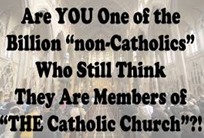 group. Following the promulgation of the 1980 Spanish law on religious freedom, in 1981 and several times later, the Palmarians applied for inscription into the official Spanish register of religious associations. However, they were repeatedly denied inscription by the Ministry of Justice, among other reasons because the term “Catholic” was controlled by the Roman Catholic Church. In later applications, they therefore introduced a new official name, Iglesia Cristiana Palmariana de los Carmelitas de la Santa Faz. In the official context, then, the church did not use the label “Catholic” but rather “Christian”.
group. Following the promulgation of the 1980 Spanish law on religious freedom, in 1981 and several times later, the Palmarians applied for inscription into the official Spanish register of religious associations. However, they were repeatedly denied inscription by the Ministry of Justice, among other reasons because the term “Catholic” was controlled by the Roman Catholic Church. In later applications, they therefore introduced a new official name, Iglesia Cristiana Palmariana de los Carmelitas de la Santa Faz. In the official context, then, the church did not use the label “Catholic” but rather “Christian”.
In 1985, the Palmarians appealed against the Ministry’s decisions to the Spanish Supreme Court. At first, the Court ruled against them. However, on November 2, 1987, the Court decided that the Palmarian church could indeed be included in the register, as they met all the formal requirements for a religious association. This decision was followed by much criticism in the Spanish media and from some researchers, who looked upon the Palmarians as a dangerous sect and a suspect business organization, most of all interested in the collecting riches.
Though Clemente Domínguez and the group around him physically took over the apparition site in 1974 and dominated the rapid development from a movement into a church of its own, most other seers clearly distanced themselves from them, not wanting another pope and a new church. Today, one can see a white cross with a picture of Pope Francis just outside the high walls of the Palmarian church compound. It is the Cruz Blanca: the gathering site for the seers who do not belong to the Palmarian church and their supporters. According to the group’s own data, about a dozen people meet there every weekday to pray the rosary. On weekends, there can by forty persons present. At Easter, however, as many as a couple of hundred gather at the site, including pilgrims from abroad.
According to the group’s website, the number of apparitions at the Cruz Blanca and in their chapel, Santuario del Corazón de María, through the decades are estimated at about 10,000 to date. At the beginning, several of the old seers claimed to receive heavenly communications by the Cruz Blanca, including Pepe Cayetano and Manuel Fernández, but in later years, only Rosario Arenillas claims to receive messages. Until his death in 2005, the group was led by Félix Arana, a former Roman Catholic priest, who in 1976 was consecrated a Palmarian bishop. However, he only maintained membership for a few months and then opposed the movement as it had developed. Arana served as the Cruz Blanca’s spiritual leader. He recorded the messages of the seers, and transcribed, published and interpreted them. He also celebrated the Tridentine mass in the chapel on a daily basis.
Christ and the Virgin are those who most frequently have appeared to the seers by the Cruz Blanca, followed by St. Joseph and Padre Pio. The messages often have a clear apocalyptic component. They are very critical of the modern Roman Catholic Church, claiming that it has been almost destroyed after Vatican II and that most priests and bishops are heretics. However, the pope is not to be blamed, as his messages are falsified by the curia. The Cruz Blanca thus claims that Pope John Paul II and his successors are true popes, but that they suffer immensely because of their fidelity. They assert that the Holy See will be overtaken by Antichrist, and that great wars and catastrophes will precede the Second Coming of Christ. In this situation, the faithful’s role is to pray for the pontiff and the church, so that the end of the world is averted. The Cruz Blanca group’s only relation to the Palmarian church, referred to by them, as “the sect of Clemente” is that they pray for their return to the Roman Catholic Church. Still, as can be seen, the contents of the messages at the Cruz Blanca are similar to the ones that Clemente received during the first half of the 1970s.
An important step in the history of the Palmarian church was taken on November 7, 2000, when Gregory XVII expelled no fewer than eighteen bishops and seven nuns, accusing them of heresy and of planning to overthrow the pope. Some of the excommunicated started an independent Palmarian community in Archidona, Andalusia, and others would follow them later. Although, they still regarded early apparitions to Clemente as verified and believed that Gregory XVII indeed had been the true pope, with the publication of the Palmarian Bible, or even from the mid-1990s, they had come to regard him as an insane heretic who had lost his papal authority. The dissenter group was very critical of the fact that Pope Gregory had suppressed the cardinalate in 1995. Further dissenters opposed his decision in 2000 to choose Father Isidoro María as his successor, taking away the possibility of a conclave. As Gregory (and Isidoro María) were regarded as manifest heretics, the group in Archidona believed the Holy See to be vacant.
*A comprehensive profile of the Holy Apostolic Catholic Palmarian Church, which contains in-line references and a complete set of references, is available in the Articles/Papers section of WRSP along with the book manuscript, A Pope of Their Own: El Palmar de Troya and the Palmarian Church.
Post Date:
28 September 2015
